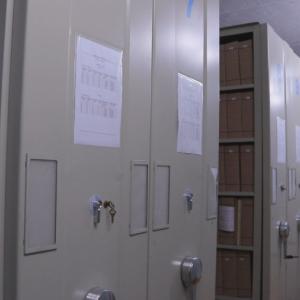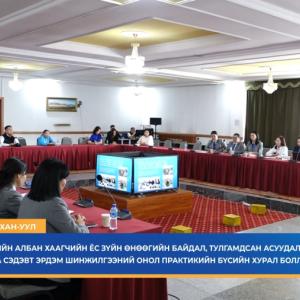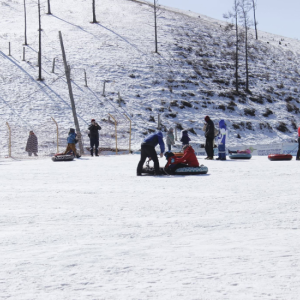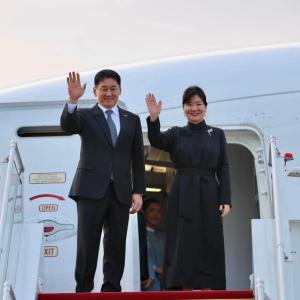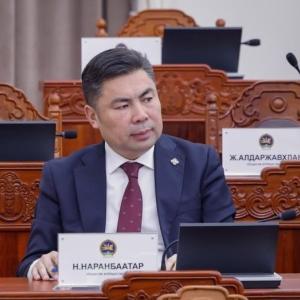What to Consider for Staying Warm in the Winter
Society
Ulaanbaatar, October 7, 2024 /MONTSAME/. As winter approaches and it is getting colder outside, have you ensured your preparation for this winter? Likewise, we layer up to be more comfortable in winter; good insulation is essential for detached houses to overcome harsh coldness. Before you start looking for good heaters or fuel, consider your house's insulation.
“Switch Off Air Pollution (SOAP) II” project funded by the European Union's SWITCH-Asia program organizes winter monitoring among 100 households in ger areas of Ulaanbaatar in order to raise awareness of the importance of house insulation and evaluate thermal comfort, annual energy consumption for heating, greenhouse gas emissions among insulated and uninsulated houses. Last year, data was collected from selected households in Bayanzurkh, Chingeltei, and Sukhbaatar districts, and it was characterized by the creation of an energy poverty vulnerability index.
Insulating your home provides the following benefits at the household level:
Greenhouse gas emissions decrease.
According to the results of the report, the annual fuel consumption of 1 m2 of fully insulated households is 46% and 37% lower than that of uninsulated and semi-insulated houses, respectively, or 197.2 kWh/m2, or compared to all households participating in the study, insulated households’ energy consumption is two times less than non-insulated ones. Households with 5 cm of roof insulation emitted 0.5 tons less carbon dioxide than households with no insulation at all. Insulating detached houses reduces greenhouse gas emissions and ensures the bare minimum to live in an environmentally friendly way.
Fluctuations in indoor air temperature stabilize
The indoor air temperature stability is one of the most important factors for living comfortably in the house is the stability of the indoor air temperature. In other words, since the indoor air temperature is stable, there is no need to get out of bed at dawn to start the start stove. Moreover, a warm home will greet you when you come home from work or school.
According to the average of 15 days of measurement, the difference between the maximum and minimum indoor air temperature among fully insulated households was 8°C, while the variation was 10.5°C and 11.4°C for households with and without roof insulation, respectively. The figure below shows how the indoor air temperature of a non-insulated household drops over the course of a day. From this, it can be seen that as the air temperature decreases, the indoor air humidity increases.

In terms of the importance of insulation, Oyunsuren, a citizen who insulated his house through the SOAP II project, highlighted, "We used 2 sacks of fuel in 24 hours in winter, and if we didn't get up at 4 o'clock in the morning every day, we would wake up with steam coming out of our mouths. Sometimes, if I forgot and went to sleep, everyone would wake up cold at 6 o'clock. " After the roof and wall insulation was done by brigades of SOAP II, my house has become adequately warm when I woke up late or was away from home."
Fuel and electricity costs are reduced.
Average fuel and electricity costs are approximately 1,215,359 MNT per year among respondents. Houses are of different sizes, and depending on this, the monthly heating fuel and electricity costs are different, so when calculating the monthly energy costs per 1 m2 of each family:
● Fully insulated house: MNT 3423
● Semi-insulated/roof-insulated house: MNT 4,397
● Uninsulated house: MNT 4833
The above information reveals that the average fuel and electricity costs for an insulated home are about 40% lower than for an uninsulated home.
In the cold season, incidents of sickness are decreased.
Depending on illness in the cold season, household health expenses vary between 30,000 and 2,000,000 MNT among respondents. Members of the 15-64 age group take 5-14 days of sick leave, while middle school and kindergarten-age children are absent from their schools for three days. By insulating houses, there is less probability of getting sick from respiratory diseases, and as a result, expenses on treatment are decreased.
Principal Component Analysis was conducted on the key influencing factors in order to reduce the parameters measured in the study to create the energy poverty vulnerability index. According to PCA statistical analysis, the most influential factors in energy vulnerability are energy expenditure and housing conditions. 47% of all respondents spend more than 10% of their monthly income on heating, while several households that cannot meet the basic needs set by the National Statistics Committee spend 30-45% of their monthly income on energy costs. Inadequate heating conditions and a lack of energy-saving practices exacerbate the vulnerability of low-income households in particular.
So, what do households need to do in order to reduce heat loss and energy costs to overcome winter?
It is highly recommended to get your house’s thermal loss
You can insulate your doors and windows with materials at hand by following the step-by-step guide from the project (It is important that the insulation is done by a trained crew, and doing it yourself is not very effective.).
We would like to extend our gratitude to the households who participated in the survey and the volunteer activists who cooperated in data collection.
If you would like to contact the "SOAP II or Dulaan Shiidel" project and get services to insulate your house, please call 7505-2000, www.dulaalga.mn website, and the "Dulaan Shiidel" Facebook page for advice and services.
The "SOAP II" project funded by the European Union’s SWITCH-Asia program, aims to implement energy-saving solutions for a total of 5,900 households, empower 160 micro and small- and medium-sized businesses, and reduce carbon dioxide emissions by 17,700 tons over a four-year period. The project is being jointly implemented by Geres INGO, the Building Energy Efficiency Center, the Mongolian National Construction Association, the Mongolian Green Finance Corporation, and the Mongolian Women's Fund.
Check out the winter monitoring report here.


 Улаанбаатар
Улаанбаатар




















